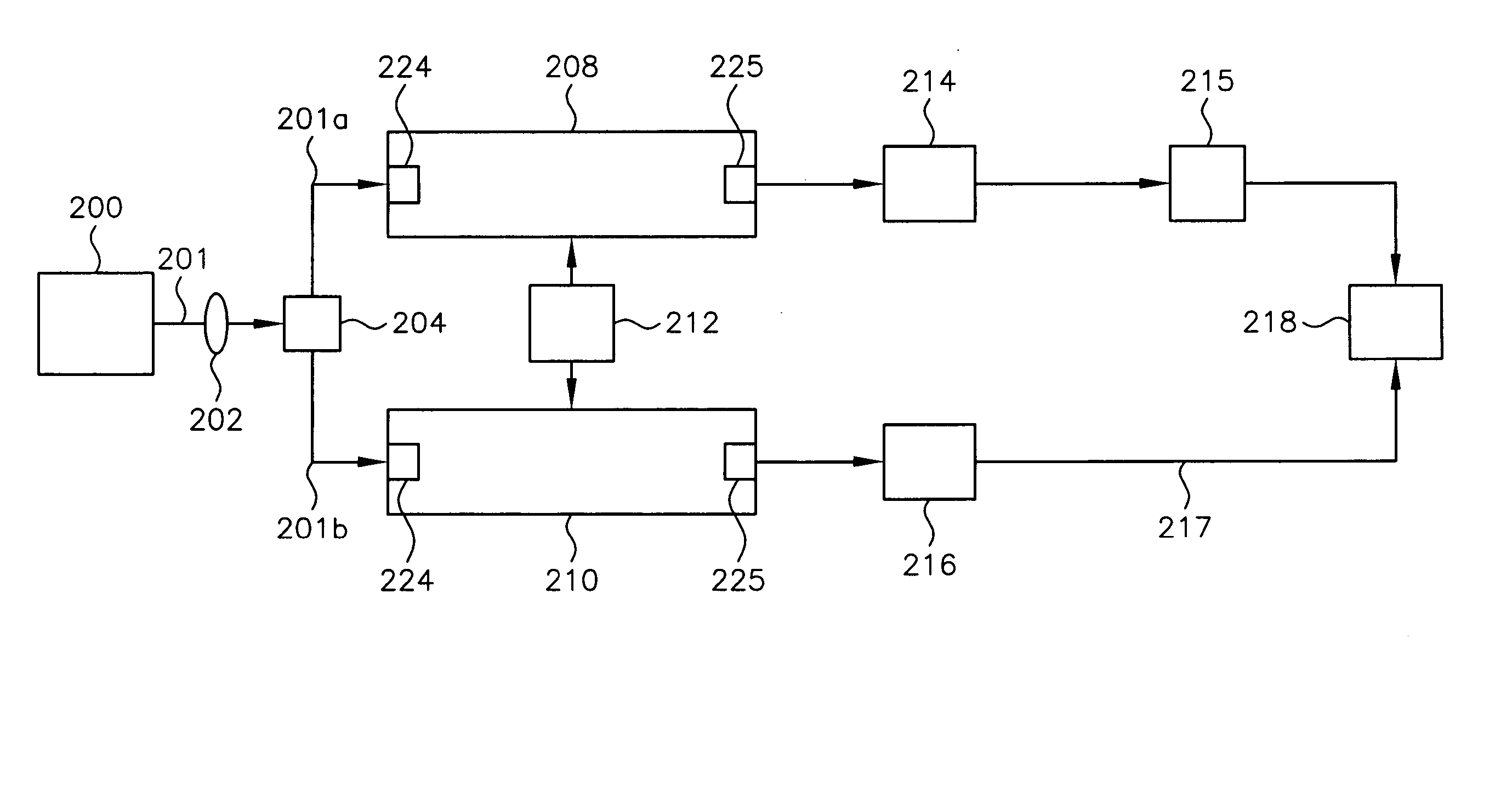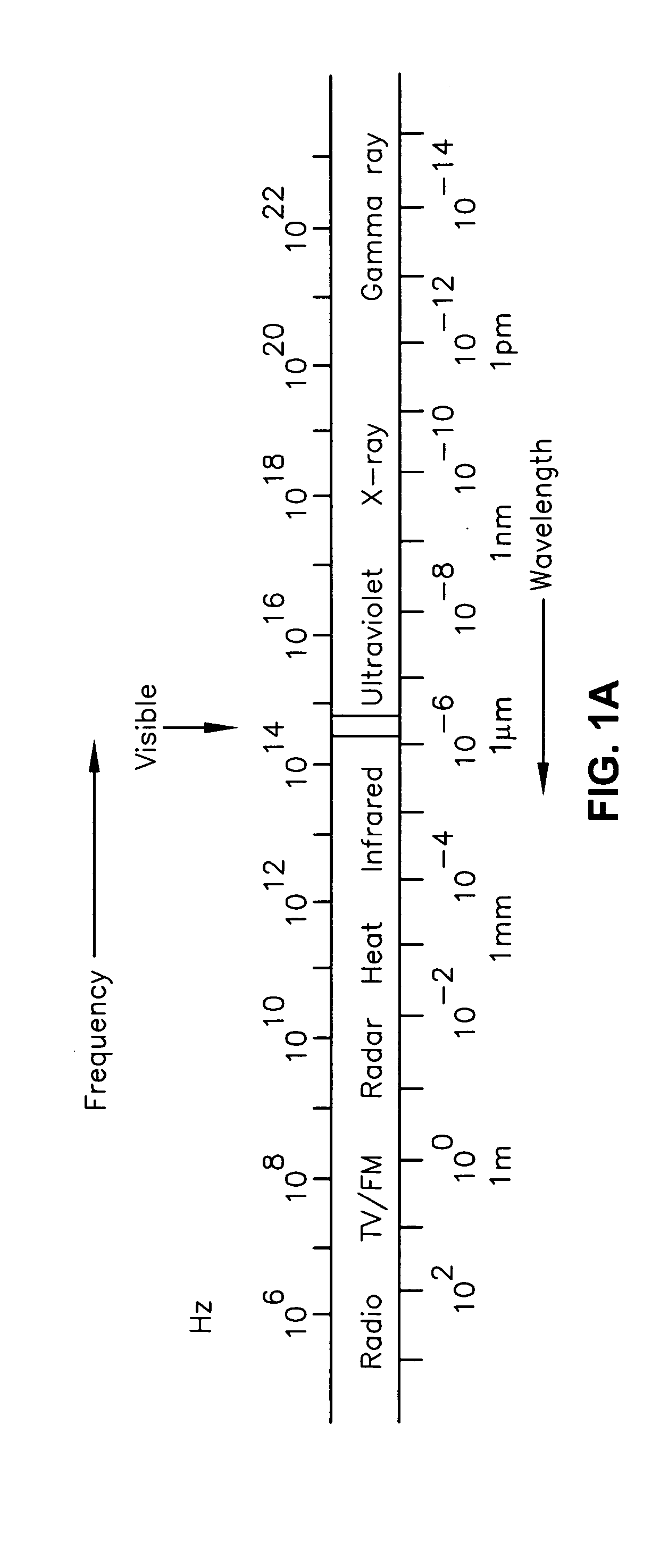Device and method of trace gas analysis using cavity ring-down spectroscopy
a technology of ring-down cavity spectroscopy and trace gas, which is applied in the field of absorption spectroscopy, can solve the problems of difficult use and impracticality for industrial applications, the inability to accurately determine the concentration of impurities using conventional cw-crds, and the yield of operational circuits reduced
- Summary
- Abstract
- Description
- Claims
- Application Information
AI Technical Summary
Benefits of technology
Problems solved by technology
Method used
Image
Examples
Embodiment Construction
[0028]FIG. 2 illustrates a first exemplary embodiment of the present invention. In FIG. 2, a gas containing an impurity, such as an analyte, is introduced into ring-down cell 208 and a gas absent the impurity is introduced into ring-down cell 210. Ring-down cells 208, 210, which may be, but are not limited to, cavity ring-down cells, can either be filled with their respective gases or the gases may be introduced by flowing the gases through the cells. (A detailed explanation of cavity ring-down spectroscopy is not provided herein as the technology is well-known to those skilled in the art.) In one exemplary embodiment, pressure regulator 212 coupled to each of cells 208, 210 maintains substantially identical pressures within the cells.
[0029] Light 201 is emitted from tuneable light source 200, such as a CW laser, for example. Light source 200 is tuned to a predetermined frequency that is consistent with the absorption frequency of the impurity. Light 201 is collected and focused by...
PUM
| Property | Measurement | Unit |
|---|---|---|
| wavelength | aaaaa | aaaaa |
| decay rate | aaaaa | aaaaa |
| concentration | aaaaa | aaaaa |
Abstract
Description
Claims
Application Information
 Login to View More
Login to View More - R&D Engineer
- R&D Manager
- IP Professional
- Industry Leading Data Capabilities
- Powerful AI technology
- Patent DNA Extraction
Browse by: Latest US Patents, China's latest patents, Technical Efficacy Thesaurus, Application Domain, Technology Topic, Popular Technical Reports.
© 2024 PatSnap. All rights reserved.Legal|Privacy policy|Modern Slavery Act Transparency Statement|Sitemap|About US| Contact US: help@patsnap.com










